Northeast Brazil: Overview of Rio Grande do Norte’s Economy
Rogério Marinho, State Secretary for Economic Development (SEDEC)
Rogério Marinho introduces Rio Grande do Norte’s State Department for Economic Development and gives an overview of the economy and activities of the state. He also mentions some of SEDEC’s main projects and discusses investment opportunities.
Interview with Rogério Marinho, State Secretary for Economic Development (SEDEC)

I would like to begin this interview with an introduction to the State Department for Economic Development, can you tell us what is the Department’s role and in which areas it functions?
We are totally open and willing to establish partnerships, but obviously taking into account the state’s interests; we are looking for investors that are serious about investing in Rio Grande do Norte and who are not just passing through.
The SEDEC is a body that works transversally in the state government of Rio Grande do Norte. We work in diverse areas all concerning the local economic development. We have a specific branch focussed on the mining sector which without any doubt is one of the largest players in the state economy. We have another branch working in the area of industry and commerce that encompasses diverse activities in areas such as the transformation sector and the services sector. There is another division working with industrial parks and establishing infrastructure. This team is also working towards establishing an industrial belt around the metropolitan area of the city of Natal and the main cities in the state of Rio Grande do Norte, principally Mossoró, Pau dos Ferros, Caicó, Assu and Macau. We also have another branch that focuses on fiscal incentives that are provided by the state government to allow for a certain compensation and traction for companies that find themselves left out of the main economic axis of the country, which is the south east of Brazil. There is another division that is linked to science and technology that aims to mediate between the economic sectors involved in software and hardware and the academies that qualify the workforce, to create synergy in this sector.
Could you give our readers who are not familiar with this state a general view of the economy in Rio Grande do Norte?
Rio Grande do Norte is in its nature an excellent logistical post. We are the corner of the Latin American continent. We are just a 6 and a half hour flight away from Lisbon and Europe, a four hour flight from Africa, principally the countries in the Horn of Africa. We are a 6 and a half hour flight from Central America and the United states via Florida. We are positioned centrally in the north east of Brazil. This location gives us a situation of comfort in terms of internalisation of merchandise; it is an advantage over other states. We have a similar position in relationship to Latin America as a whole; you just have to look at our position on the map.
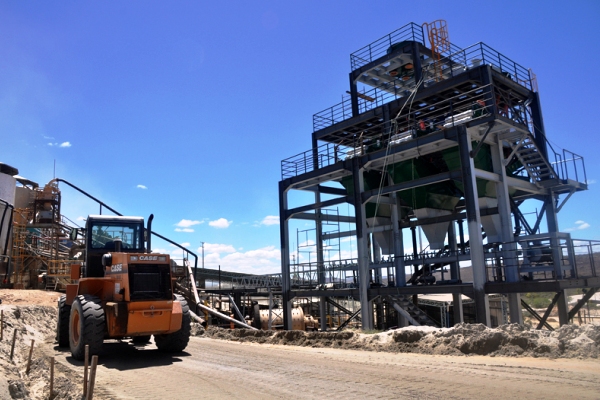
This state has an area of just over 55 thousand km2 and despite our relatively small area we have enormous mineral potential. For example we have an area of 20 thousand km2 of chalk, which is a significant amount of raw material. All the cement factories in the world could install themselves on our coastline and the supply of chalk would not run out for the next 300 years. We have gold mines, tungsten, sulphur and salt. 95% of the salt produced in Brazil comes from Rio Grande do Norte. We have granite and marble, we have semi-precious stones such as aquamarine, topaz, amethyst, etc. We are a region with a large natural deposit of minerals, nearly all of which are able to be commercialised. We also have silicon which is a raw material used in the manufacturing of photovoltaic panels for solar energy. We also have sodium carbonate here. At the moment Brazil imports nearly 2 million tonnes of sodium carbonate per year but is not producing any. So we have the complete circuit of chemical elements that allow for industry and exploration in this area.
We also have a good amount of land available for agriculture, flat lands that don’t need to be levelled, we have good fertile soil. We have large reservoirs such as the Armando Ribeiro Gonçalves reservoir and the reservoir Santa Cruz in Apodi. We expect the transposition, integration and permanency of our waterways that will give us a secure water supply to be able to intensify our irrigated agriculture. We are the largest producer of melon in the country; we export on a great scale, particularly to Europe.
We have a large quantity of textile centres. The large companies here in Brazil outsource a lot of work to Rio Grande do Norte; we have a tradition of providing a good workforce.
We have two or three sugar cane factories here, which is an ancestral culture in this region dating back to over 400 years ago. Basically the local economy used to be based upon sugar cane, cotton and cattle, now it has moved to agriculture and livestock and we also have tourism here. Rio Grande do Norte has more than 400km of coastline, of which about three quarters is practically untouched. It is a coastline that is quite disproportionate in terms of our state’s area; as we are on the corner of Brazil we have a long coast line. We receive a large amount of regional and national tourism. We have a chain of hotels that has nearly 40 thousand beds, which is more than in Recife and Paraíba, and similar but just more than the number of beds in Ceará. This shows the strength of this sector here despite the small size of our state.

We have petroleum and gas here; we are the second producer of inland petroleum. We have great wind energy potential. We have tropical winds that occur all year round. This particularity gives us a slight advantage over other states in Brazil, because we have intense, regular and constant wind. Maybe there are three other places in the world with these three wind factors: Ethiopia, Eritrea and Venezuela. The Wind Power Atlas that began in 2005 and is being updated this year, shows that we have the potential to produce about 35 to 38 gigawatts of energy, compared to the Hydroelectric Power Station Itaipu which produces 17 gigawatts of energy. Therefore we have the ability to produce two and a half times the amount of energy that the plant in Itaipu generates. This state has the highest number of contracted wind farms within the national electrical system. 35% of the wind power in this country is here in Rio Grande do Norte. We have 3 gigas contracted already; we have about 90 wind farms. This is an investment worth more than 10 billion reals. We have around 95 to 100 energy parks ready to go to auction. We have 150 to 160 projects that are in the process of getting their environmental certification in order to begin functioning.
93% of the state’s territory is in the semi-arid region of Brazil. Our region is perhaps one of the sunniest in the country. This gives us another advantage in terms of renewable energy in the form of solar energy. We have been working together with the standardisation of the federal government since the end of last year, on the micro generation of energy, with the possibility of making an agreement between the company that distributes energy and the citizen generating energy in their own residence that benefits both parties.
We are negotiating with 5 companies, three are Italian, one is Spanish and one is a German company. We are in negotiations for them to begin to set up here and manufacture photovoltaic panels and also to set up solar energy parks. Therefore the state is working in the technology sector in a very aggressive way establishing renewable energy parks. So those who want to come and discover Rio Grande do Norte are going to find a small state in terms of area, but a state with a great vocation to translate its natural resources into revenue, opportunities and business.
What are the strategic projects that the Department has at the moment, what is the Department’s main focus?
The department is working on what I believe to be a pioneering project, an example for the whole country, still in the beginning phases. It is a product that we call ‘Movimenta Rio Grande do Norte’. It is a product that aims to offer businessmen and investors an in depth vision of the state, rather like Marcopolis. We have finished a reference proposal, which is ready; where we put together the points that deserve to be studied on our part. We called upon private partners, the sponsoring federations, some of the largest companies in the state, the universities and the unions to participate in the elaboration and to accompany us in the formatting of this project.
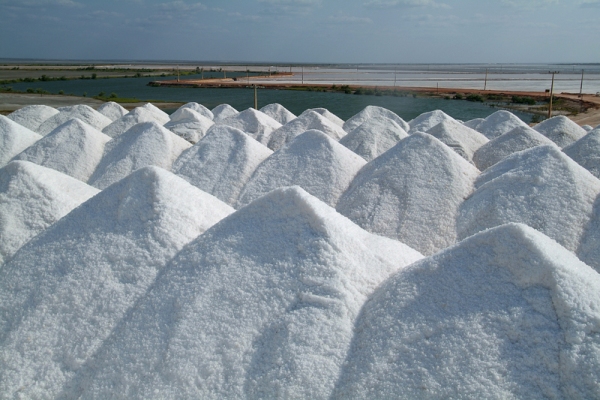
It’s going to have two branches; one will be a thorough diagnostic, providing this information virtually and physically in three languages, English, Spanish and Portuguese, so that investors coming to our state to set up a business can have direct access to all the information necessary to make a business plan. We will offer information about the logistics, the airports, ports, railways, highways, etc. We will provide maps to show the integration of all these modes of transportation in such a way to have focus and rationality in state and private investment.
From these diagnostics, we are going to focus on what we want to achieve in the future. In two years’ time this government period will finish so we have our short term goals, but we have medium term goals to achieve by 2024 and long term goals by 2034. So this product will be a hybrid plan, while at the same time it is a business plan it will also indicate the path for state planning, defining the necessary actions to meet our society’s needs.
There is a tendency here in Brazil and other countries to discuss strategic planning in a segmented way. For example I talked about logistics, what normally happens here, to tackle highway logistics which is the main mode of transport here in Brazil, there is a specific department, which is the DNT nationally and then each state has its own department, for the ports there is a specific federal department, for airports, etc… but they don’t intercommunicate. So our idea is to integrate all these systems, so we can provide conditions for the state to receive medium and long term companies with intensive capital and workforce, such as base industries, transformer industries, in other words industries that have a different impact on our economy. In the past we have lost some opportunities, there was an opportunity to have an oil refinery here as Ceará and Pernambuco both have. However we lacked an adequate port; 400 years ago this city grew around its port, ours is a small port, but to expand it you would have to use land in the historical part of town and that is not going to happen. So we have to look for another location for a port with integrated logistics for example with the railways that are interconnected with the most important economies that can ease the development of these transport systems.
Apart from the question of logistics there is also energy, this state used to buy energy, until 5 years ago when we became traders of energy. To be able to sell energy we need to show that we are able to develop and for this we need good infrastructure for transmission. We have to work on an infrastructure that will be able to support all of our potential in renewable energy, both wind and solar and also eventually the development of our industrial park with our transformer industry. We need to focus on building a structure for medium and long term transmission.
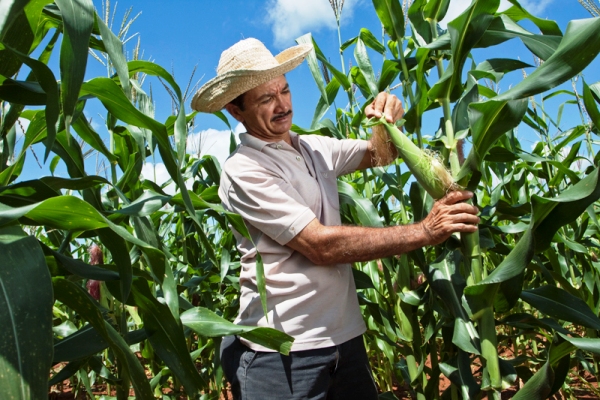
Apart from energy and the generation of energy, we hope to establish the possibility of technological innovation. We are elaborating a process with the Federal University, Petrobras and private partners to set up a technological park related to energy both petrol and gas, with Petrobras who are the leaders in this sector and also with renewable energy. We want to launch this project in the next 40 days. For this we have had a loan from the World Bank that will allow us to set up the infrastructure. We have to convince the companies that might be interested in joining their synergy with ours to do so. We want to set ourselves above the rest, to work intensively in innovation and not only production of equipment to complete the productive chain linked to renewable energy. We want to be a leader in this country, we already have nearly 45% of this potential but we don’t want to merely produce energy, we want to add value to the chain.
Another aspect of this business plan is the question of communications; we believe it is important to have an excellent network of fibre optic connectivity for high speed transmission of data, voice, and cryptic data for secure transmission. On top of this we want to cover the ‘shady’ areas that we have in this state, which are the areas where the antennas from our telephone operators can’t reach or where signal arrives intermittently and therefore the operators can’t provide the content and service they were contracted for. We want to be able to identify the problem through this diagnosis and charge the operators for the solution to this issue so that we won’t have these ‘shady’ areas in the future in our state.
Another branch of the business plan is human capital. We are identifying what our training needs are, looking at what we already have in terms of academies, technical schools, governmental training centres, etc. We are researching the kind of professional that is being trained here, and what further training is needed. From this research we can decide where to focus our training to be able to help our economy and our potential for growth. We need to link up the qualified workforce with the market needs, which sounds obvious and innocent, but unfortunately there is a huge void here in this sense. Therefore we need to create a synergy between the market and education. At the same time we have to work on this for the medium and long term, by looking at what is the economic vocation in this area and focusing on qualifications and training in these fields and also focusing on prospecting workforce so that the local community can benefit preferentially from the employment generated in Rio Grande do Norte. Evidently nobody is going to impose that a private company hire unqualified workforce, so we have to carry out our obligations.
Now referring to the natural resources here in this state, we have many mineral deposits; I talked about chalk, tungsten marble, granite, gold, etc. We have maps showing where the deposits are found and what their dimensions and economic potential are. We are able to see more than what is available to the public reader; we have access to information on the register from the DPM, the national department of mineral research. This information can’t be published due to market affairs. We have the information regarding our stock of agricultural lands and what activities are being carried out on them. We also have the information regarding our hydro resources both underground and over ground including our system of aqueducts and water reservoirs in the interior of the state. We have all the economic and environmental mapping and zoning of the state and of all the productive settlings in the region. The state has areas that are untouched with their own characteristics, economic potential and each with distinct vocations, so we need to identify what is their particular potential and what kind of economic insertion could be carried out according to their economic and environmental profile. We want to combine all of this with sustainable development. We want development and preservation.
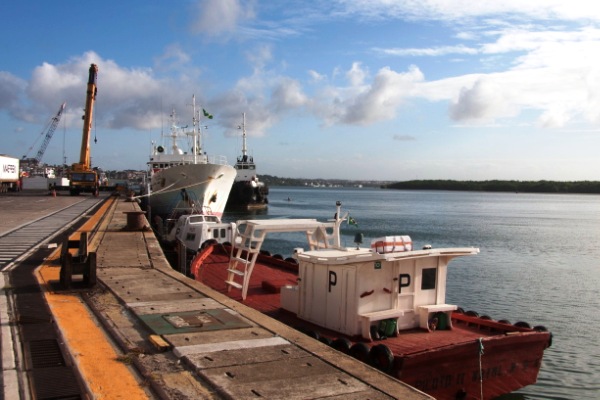
What are the fiscal incentives that we have here for businessmen, investors or citizens who want to import or export, set up a hotel or a business, etc.? What kind of legislation exists that will affect them? What can the state government offer to attract them to this state? Well, we provide extensive information concerning the economic, educational and social issues in the state. For example how many doctors are in each city, their specialities, where they are located, how many civil engineers, chemical engineers, technicians, software programmers, etc. Essentially we have a whole bank of up to date data. We have all the information concerning academies and schools from city to city, what kind of economic activity occurs where, you get the idea… So we want all this information that is normally spread out in different bodies and organisations to be found in one place and most importantly that this be a permanent resource. I mean you can work for 8 or 9 months really hard. We are carrying out presentation seminars where we are bringing together investors, traders, and academies, etc. to discuss what kind of direction we need to take, taking into account social profile, economic vocation, willingness of citizens and suitability as a territory, to be able to find a common ground. After all this analysis it is obvious that you will have a concept for a project but it could be just loads of papers to put on the shelf to gather dust. However we are asking the consulting services to provide a governance model for this project so that it can continue into the long term and be implemented and updated. Evidently later on, we will charge for some information. This resource is going to a bank of information that is live and permanent for the development of Rio Grande do Norte.
I would say that we are working on the technological park in partnership with the university. We hope to have an export processing zone (EPZ). We had a meeting today in the metropolitan city of Macaíba, about this EPZ. In Brazil there are just 2 more or less functioning now, of the 30 that were authorised by the federal government. In order to have an EPZ you have to have both the physical area and an anchor company. Imagine a shopping mall; you have to have the anchor business, the one that drives the whole place. To be able to bring in that kind of company to an EPZ within a busness model that only allows for 20% of internalisation and where 80% has to go to export, you have to look for a special kind of company. Therefore we are looking at how to attract companies that could be anchors for this project. We believe that in 60 days we should have this player. We have 3 or 4 alternatives. We are in negotiation rounds to discuss this at the moment. If everything goes well we believe that in the next 60 days we should have a great centre of development in the metropolitan area of the state.
Another challenge to talk about is our airport. We consider the airport of São Gonçalo do Amarante to be one of our most important gateways and mode of logistics. This airport has an area of 1500 hectares making it the largest airport in Brazil today. There is also an extra area of 2500 hectares in a directive plan laying down urban planning regulations around this airport where buildings that are not suitable for flight safety are not allowed to be constructed. This is going to allow for commercial growth within the area in terms of commercial, hotel or industrial constructions, etc. We have a runway that is 70m long, it’s the longest in Brazil, 4000m2 of extension. Initially this airport was going to be twice as big as it is now, with capacity for 2.6 million passengers. Then for years it was going to have a capacity for 6 million. It has an expansion capacity for 70million passengers per year which is significant for the size of the airport. To have an airport as your main form of logistics, we are interested in and working towards attracting a synergy between other countries and Rio Grande do Norte. For example with Spain and the province of Aragón, we are going to welcome a committee from Zaragoza whose airport is an example for this state. Zaragosa is an airport city, and around the airport there are industrial companies that manufacture products with high added value to allow for the high cost of air travel. They have a kind of ‘dry port’ legislation that we call industrial warehousing procedure that allows for internalisation and chartering of the merchandise and its subsequent distribution nationally and within Mercosur. Here in Latin America this is unique as far as I know apart from in Panama where there is a big shopping mall and a duty free zone surrounding the airport. This commercial complex attracts people from all over the American continent to Panama, not to see the Panama Canal but to go shopping. This obviously drives their economy very well. Therefore we are looking forward to establishing our airport that is going to be inaugurated in April of next year, before the World Cup and we shall make this an airport city and an industrial warehousing port.
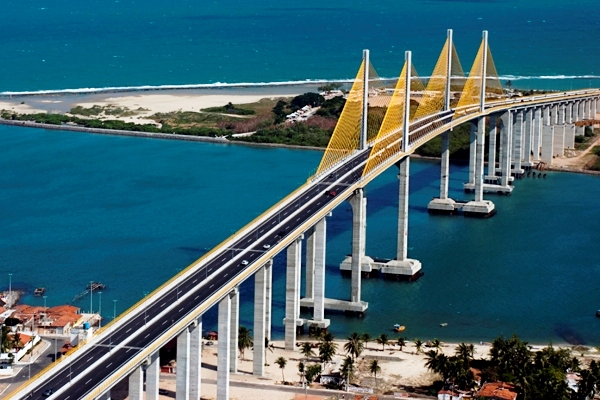
We are putting together a business plan that is going to be legitimised by this project, in which we are hoping to join up the loose ends so to speak by identifying opportunities for business cargo that will justify in this private activity a railway and a new port. We need a business plan that allows for 30 to 35 years of use and our idea is initially to transport solids in bulk: feldspar, chalk and iron that imply large volumes and that would count for 10 to 14 million tonnes a year of cargo. That would be a larger volume of bulk cargo capacity than Pecém in Ceará and of Suape in Pernambuco.
If you had to choose two or three investment opportunities available for a foreign investor, what would they be and how can the federal government help them to set up here?
Firstly, we have travelled abroad; I have been to Spain, Italy and Portugal in search of these partnerships. We have great potential in natural resources, in agriculture, minerals, renewable energy and technology, etc. but we don’t have the necessary amount or quality of technical expertise to do all of this on our own. Obviously Brazil as a whole has partners that could come here. However nationally there is a tendency for those who live in São Paulo, Rio de Janeiro or Minas for questions of comfort or culture, to prefer to establish their business in those regions.
Rio Grande do Norte is part of the north eastern region of Brazil, which has 56 million inhabitants and together with the northern region of Brazil the populations is of 64 or 65 million. This is more than the population of Italy or Argentina; it’s a huge amount of people and so a large market. However the market is held back by the lack of quality products manufactured here not least because of logistics in the region. So we are open to foreign investment. We have a series of fiscal incentives, even for importing merchandise. We are pro import, which makes a difference from the internalisation that you normally see, in this sense there are a series of tax incentives linked to the state. We also have tax incentives that are pro agroindustry, which prioritise companies that establish themselves here in the state. We are able to offer plots of land through a process of negotiations, to set up industrial factories. We are able to offer assistance in all that concerns training of staff at no cost to the company. Therefore as the state, what we can offer is a partnership.
We are totally open and willing to establish partnerships, but obviously taking into account the state’s interests; we are looking for investors that are serious about investing in Rio Grande do Norte and who are not just passing through. We are looking for businesses that want to work hard, to grow and to make money with us. We know that business and money are a sensitive matter that need clear rules, definitions and transparency and this is what we can offer here in Rio Grande do Norte.
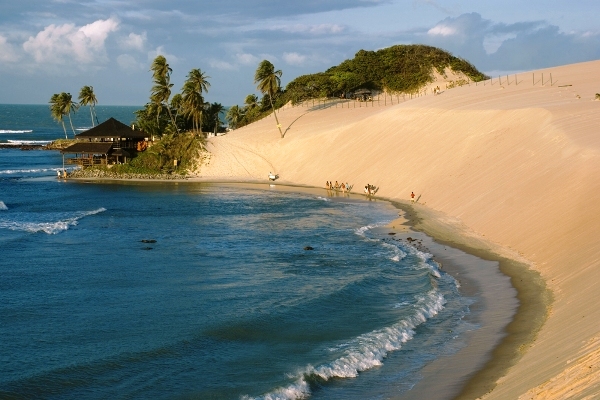
To conclude, what is your vision for the state in 2 or 3 years, what would you like to achieve? And what would you really like to see in the long term in 10 years’ time?
In two years’ time when you come back to Rio Grande do Norte I would like our air travel to be consolidated, with the new airport up and running. I would like to see the installation of companies that are going to transform our airport into the gateway into Brazil; a regional and international hub. That is what I really want, and at the same time, with the other objectives that take longer to be put into place, because of matters of construction or infrastructure, I would like to see that they are in progress. I would like to see that we have defined the investors and the modes of financing the projects, that work is beginning on these projects and that the infrastructure is being integrated. In two years I would like the technological park to be up and running with alternative and fossil fuel energy and I want our EPZ to be developed and functioning.
In ten years I hope to be able to see the fruits of our labour. I want to see that everything we are working towards now can transform this state into a state that is capable of attracting excellent investment from companies with intensive capital and workforce. I would like to see investment from petrochemical, textile, surgical and electronic industries and also for us to go up a level in terms of tourism.
Tourism is very important for us but our big problem is that discussions between local environmental groups concerning licensing have left us a bit behind in terms of tourist resorts. Certainly if we did have such international resorts they would begin a whole chain of development in other sectors. We would have hotels and tourism on a much greater level and consequently this would bring in tourists of a higher income than what we see currently. In 10 years’ time I would like us to have 3 or 4 of the best international resorts, golf course, etc. so that tourists can benefit from our excellent levels of safety, our beautiful natural attractions and the hardworking nature the people of Rio Grande do Norte and we can become an important tourist destination.